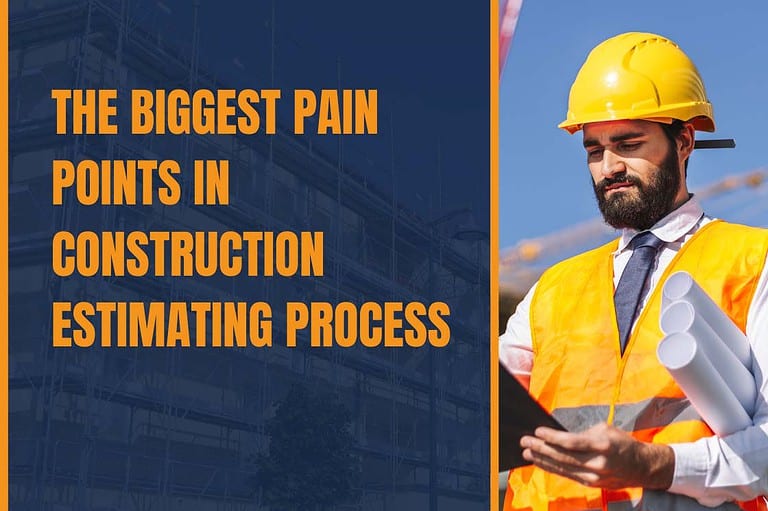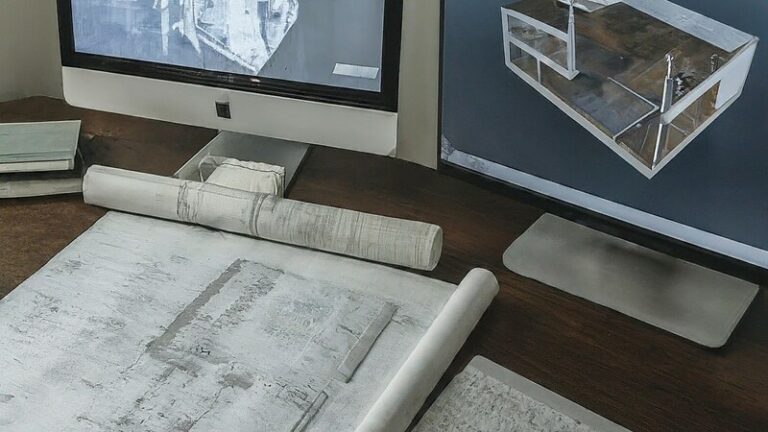In any construction project, accurate estimation is critical to success. If you’re off by even a small amount, it can throw the whole project off course. There are a lot of factors that go into creating an estimate, and the process can be time-consuming and complex. In this blog post, we’ll explore the biggest pain points in today’s construction estimating process and offer some solutions to help make your next project a success.
Changes in orders, always affect cost and schedule
As construction projects often involve changes in orders, these changes can have a significant impact on both cost and schedule. In fact, one of the biggest pain points in today’s construction estimating process is the lack of visibility into how changes in orders will impact cost and schedule.
This lack of visibility can lead to construction projects going over budget and behind schedule, which can be extremely costly for both the contractor and the client. To avoid this, it is essential to have a clear understanding of how changes in orders will affect cost and schedule. By doing so, you can make informed decisions about whether or not to proceed with a change, and if so, how to mitigate any potential impacts on cost and schedule.
Weather, try placing 1000 yds of concrete in a snowstorm
One of the biggest pain points in today’s construction estimating process is the weather. Trying to place 1000 yds of concrete in a snowstorm can be a nightmare. The cold weather can cause the concrete to freeze, which can lead to cracks and other damage.
To help mitigate the risk of weather-related damage, it’s important to have a good understanding of your project site and the expected weather conditions. If possible, try to schedule concrete placement for warmer days. If you must place concrete in cold weather, take steps to protect the concrete from freezing, such as using heated mats or blankets.
Deliveries, “it was supposed to be here yesterday”!
Deliveries are a huge pain point in the construction estimating process. They’re often late, which can cause delays in the project. Sometimes, the material isn’t even what was ordered, which can cause even more delays. It’s a frustrating process that can really hold up a project.
There are a few things that you can do to try to avoid delivery delays:
- Make sure that you have a clear and concise delivery schedule. This should be agreed upon by both the contractor and the supplier.
- Order materials well in advance of when they’re needed. This will give the supplier plenty of time to get the materials to you.
- Keep track of your deliveries. This way, if there is a problem, you can easily find out where the material is and when it was supposed to be delivered.
- Work with reputable suppliers. They’re more likely to deliver on time and with the right materials.
Demanding clients
Construction estimating can be a complex and time-consuming process, particularly when it comes to dealing with clients.
Clients can often be demanding and unreasonable, expecting unrealistic deadlines and perfection in every aspect of the project. They can also be uncooperative, refusing to provide information or make decisions in a timely manner.
This can all contribute to frustration and delays in the estimating process, costing both time and money. It’s therefore important to try to manage client expectations as good as possible, setting realistic goals and timelines from the outset.
It’s also important to have a good understanding of your client’s needs and wants. What are their priorities? What is their budget? What is their timeline? Answering these questions upfront will help you avoid any surprises or disappointments later on.
Failing to Assess Risks
If you fail to assess the risks involved with taking on a project, you may be unable to gain approval for your project or adequately negotiate project terms. Furthermore, if the risks are not accurately assessed, you will likely be unable to provide information that would help in making project decisions and developing risk mitigation strategies. The stakeholder expectations will likely not be realistic either.
Failing to Plan
It should go without saying that failing to plan is a sure way to fail at executing and managing your project. If there is no clear plan, it is impossible for anyone to know what needs to happen when. Even more importantly, if stakeholders do not know what needs to happen when, they cannot realistically support you or your team throughout the course of your project. Remember that communication must be two-way: stakeholders need information from you before they can provide their own input.
Failing to Communicate
Communication failures frequently lead to other failures, including those listed previously in this section. There are many ways in which communication can fail; some of these include sending unclear messages; sending messages too late; withholding important information; or sending too many messages over time (i.e., information overload).
Failing to Manage Change
Change is inevitable when a project is undertaken. Most people are resistant to change, and will likely resist the changes your project brings about. If you fail to manage these changes, your stakeholders may become hesitant to support the project, or may withdraw their support entirely. The latter scenario would be disastrous for your project!
Inaccurate or incomplete Takeoffs
There is nothing more frustrating than being caught off-guard, takeoffs that are inaccurate or incomplete. This can cause serious problems for your company, especially if you have to pay for the mistake out of your own pocket.
Here are a few tips to make sure your Takeoffs are as accurate and complete as possible:
- Review the plans and specifications carefully before starting the Takeoff process. This will help you identify any potential errors or omissions.
- Use software that allows you to input data directly into the system, rather than manually transcribing it. This will help reduce errors and ensure accuracy.
- Verify all measurements and quantities before finalizing the Takeoff. This will help avoid costly mistakes down the road.
Advantages of using an automated estimating software as ConWize
ConWize is an end-to-end bidding and estimation software for the construction industry. It’s an intelligent, cloud-based software that streamlines the entire estimation process, from start to finish.
ConWize is used by general contractors, subcontractors, and suppliers to quickly and accurately estimate the cost of a project. The software is simple to use and can be accessed from anywhere in the world, making it the perfect tool for businesses of all sizes.
With ConWize, you can:
- Reduce estimation errors by up to 90%
- Save up to 50% of time working on a tender
- Increase win rate by up to 10%
- Streamline subcontractors bidding process and save up to 70%
- Save 100% time of shifting tenders data to execution















